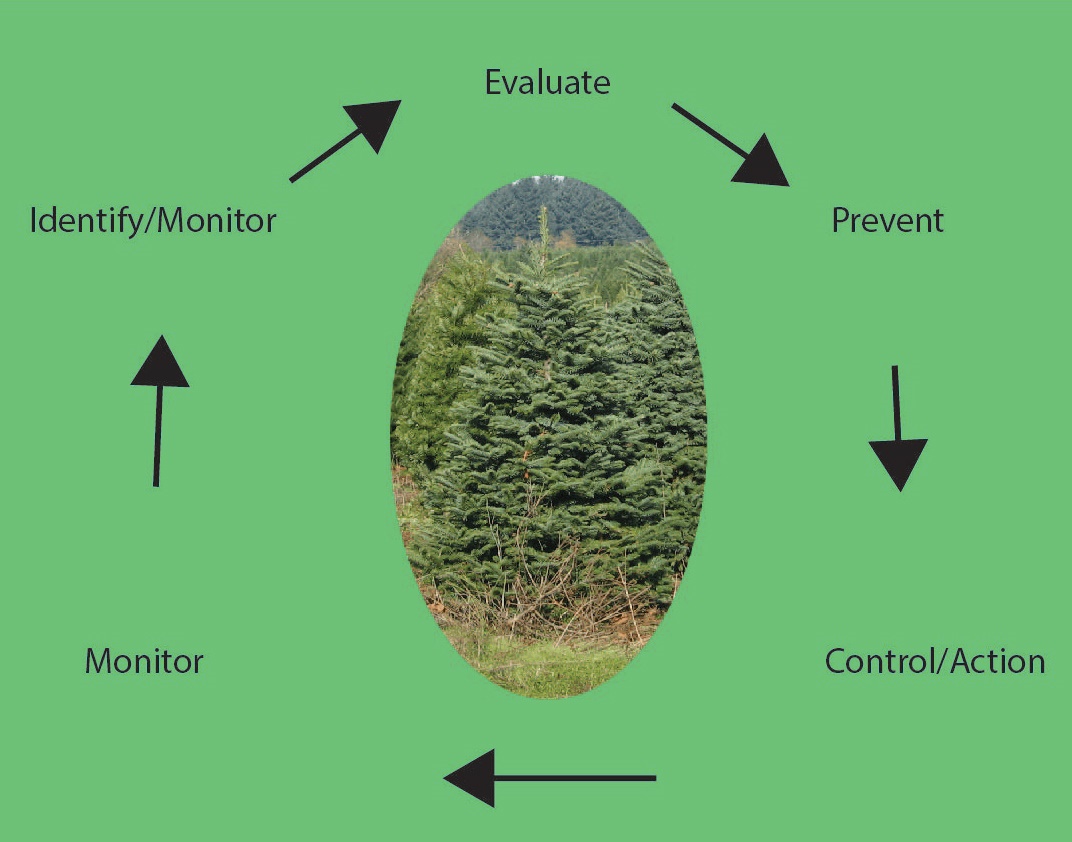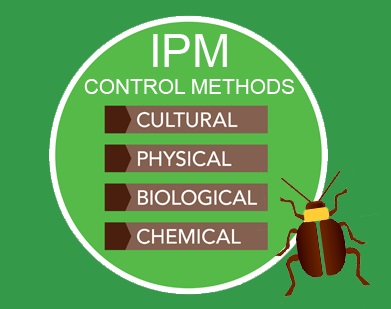What is Integrated Pest Management (IPM)? *
Integrated Pest Management (IPM) is an effective and environmentally sensitive approach to pest management that relies on a combination of common-sense practices. These practices set action thresholds, monitors, identifies pests and focuses on prevention and control.
IPM programs use current, comprehensive information on the life cycles of pests and their interaction with the environment. This information, in combination with available pest control methods, is used to manage pest damage by the most economical means, and with the least possible hazard to people, property, and the environment.
IPM is not a single pest control method but, rather, a series of pest management evaluations, decisions and controls. In practicing IPM, growers who are aware of the potential for pest infestation follow a four-tiered approach. The four steps include:
1. Set Action Thresholds - -a point at which pest populations or environmental conditions indicate that pest control action must be taken.
2. Monitor and Identify Pests - IPM programs work to monitor for pests and identify them accurately, so that appropriate control decisions can be made in conjunction with action thresholds. This monitoring and identification removes the possibility that pesticides will be used when they are not really needed or that the wrong kind of pesticide will be used.
3. Prevention - These control methods can be very effective and cost-efficient and present little to no risk to people or the environment.
4. Control - Once monitoring, identification, and action thresholds indicate that pest control is required, and preventive methods are no longer effective or available, IPM programs then evaluate the proper control method both for effectiveness and risk. Effective, less risky pest controls are chosen first, including highly targeted chemicals, such as pheromones to disrupt pest mating, or mechanical control, such as trapping or weeding.
So, what does that mean for Kirk tree fields?
We use a combination of methods to control pests in our fields.
• Biological control, using natural enemies – predators and competitors to control pests and their damage.
• Cultural control - Removing trees, or branches from trees in our fields that have shown symptoms of pest infestation.
• Mechanical Control - Cultivating, tilling, and mowing to reduce and eliminate unwanted vegetation from our fields.
• Chemical control – Chemical control is only used when all other approaches have not been effective to control pests. Pesticides are selected and applied in a way that minimizes their possible harm to people, non-target organisms, and the environment. With IPM we use the most selective pesticide that will do the job and be the safest for other organisms and for air, soil, and water quality; use pesticides in bait stations rather than sprays; or spot-spray a few weeds instead of an entire area.
Other farmers trust us to house their honey bee hives on our farms until the fall, when they are moved to a warmer climate. We consider honey bees to be a delicate and important aspect of our environment. That tells us we are doing the right thing.
*Per the Environmental Protection Agency





